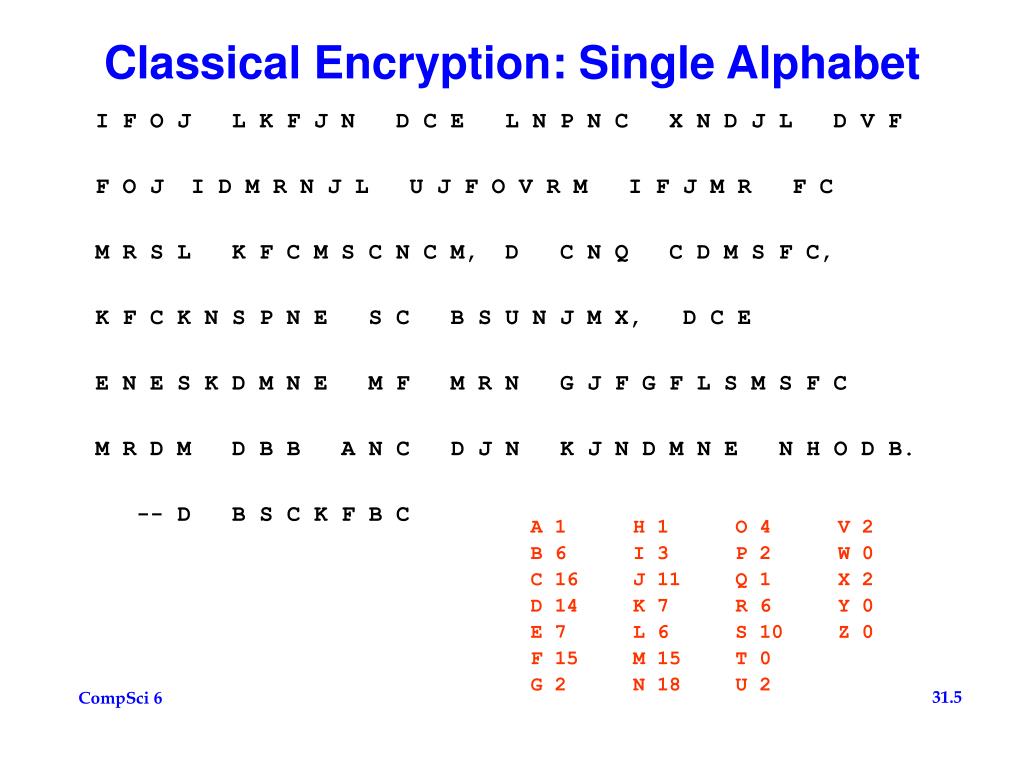

Multiplicative Cipher: In multiplicative cipher, the encryption algorithm specifies the multiplication of the plaintext with the key and the decryption algorithm specifies the division of the ciphertext by the key as shown in the figure below. The method is named after Julius Caesar, who used it to communicate with his generals. For example, with a shift of 3, A would be replaced by D, B would become E, and so on. To encrypt the message " NOTSECURE" with Key = 07Ģ. It is a type of substitution cipher in which each letter in the plaintext is replaced by a letter some fixed number of positions further down the alphabet. The most common types of cryptograms are monoalphabetic substitution ciphers, called Aristocrats if. Plaintext = PHHW PH, which is not meaningful so take next keyįor Key 1, Plaintext= nffu nf, which is again not meaningful so take next keyįor Key 2, Plaintext = meet me, which makes some meaning Usually it is simple enough that it can be solved by hand. Key not given we have to calculate it & get the plaintext for which we need to check it with all 26 keys available set of keys with us ( A= 0 to Z= 25) till a meaningful message is obtained. Decrypt the message kmq sgdbgk using the monoalphabetic substitution cipher with the key given above. Then, by applying the numerical equivalent of each letter algorithmĪlgorithm for the numerical equivalent of each letterĮncryption algorithm for the above example isĭecryption algorithm for the above example isĬiphertext=PHHW PH is given and plaintext needs to be found using the decryption algorithm but no key is given. If Plaintext = CNS IS MY FAV SUBJECT and Key = 3 Substitution Solver This tool solves monoalphabetic substitution ciphers, also known as cryptograms. To apply the mathematical operations on the plaintext and the ciphertext, we assign numerical values to each letter as shown in the figure below. Here is an alphabet that also includes digits, a space and some characters that would be useful for making a dictionary.Īlphabet: abcdefghijklmnopqrstuvwxyz 123456789.Assume that the plaintext consists of letters A to Z and that the ciphertext also consists of letters A to Z. The character at crypta is V, so V would be added to the result string. Applying shift substitution cipher method to decrypt the given cipher text: Brute force method is used to evaluate the key for decryption. for letter in text:Įxample: Let’s say that letter is E. This grabs the character with the same index in the cryptabet, and adds it to the result. What’s different is ciphertext = ciphertext + crypta. The input to the program will be a string of plaintext and the value of the key. Inside the loop that generates the ciphertext, it starts the same way, by finding the index of the letter in the alphabet with index = alpha.find(letter). Write a program that can encode and decode Caesar ciphers. Like the other cipher functions, this one also declares an empty string named result to store the result. The built-in key is the cryptabet, a reverse alphabet in this case.

The atbash function has one parameter, text.
#SUBSTITUTION CIPHER DECODER CODE#
Your code has to use result = atbash(plaintext) to get the ciphertext-no key required. One of the site visitors has asked us for such a translator. The calculator below will output English text for a message typed with the Bill Cipher (the main antagonist of Gravity Falls) code symbols. How It Works - substitution_cipher_atbash This online calculator can decode messages written with Bill's symbol substitution cipher.

#SUBSTITUTION CIPHER DECODER UPDATE#
# The script starts executing statements from here. If parts of this website do not work properly for you, please update your browser. Enter and save substitution_cipher_atbash, then flash it into the micro:bit.The simplest example of this is the Atbash or reverse-alphabet cipher.Įxample script: substitution_cipher_atbash With a substitution cipher, each character in an alphabet maps to a cryptabet with different characters in the same position. A Caesar cipher, rotation cipher or shift cipher is a simple substitution cipher where the cleartext is shifted a number of times up or down a known alphabet. Another encryption example is the substitution cipher.


 0 kommentar(er)
0 kommentar(er)
